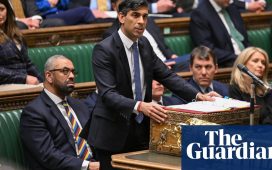The greatest failure of Jeremy Corbyn’s career was born in the hubris of its greatest success. In 2017, with a voter base split between leave and remain, Labour was widely expected to struggle to keep its flimsy electoral coalition together. But the party adopted a position of “tactical ambiguity”: it committed to leaving the EU and the single market and ending free movement of people, while adopting such a belligerent tone against a no-deal Brexit that remainers might mistake Labour for being against Brexit itself.
The relative success of Labour’s 2017 election campaign convinced the leadership that tactical ambiguity was the long-term solution to its Brexit conundrum. It could continue to mount parliamentary attacks on Theresa May’s minority government, while giving away as little as possible on where it actually stood.
As a result, the party fell behind the curve on Brexit. During the course of 2018, as support for a second referendum among remain voters hardened, Labour was left playing catch-up. Its complacency would cost it dear. The carefully crafted tactical ambiguity descended into megaphone diplomacy conducted by shadow ministers on the Sunday morning TV sofas. The likes of Keir Starmer and Barry Gardiner would openly contradict each other’s position, while Corbyn showed little in the way of leadership.
By the time Labour had excruciatingly dragged itself to supporting a second referendum, the party had been vanquished in the European elections, lost the trust of remainers, and demonstrated to the entire electorate that it couldn’t make up its mind. Strategic precision in 2017 had become panicked prevarication two years later.
Given the obliteration of Labour majorities in leave-voting parts of Wales and England, it is clear that the shift to backing a second referendum hurt the party at the polls. But not shifting would have hurt it the other way – Labour could plausibly have lost Bermondsey, Croydon Central, Battersea, Enfield Southgate and other seats had it not moved to swallow much of the remain vote.
Labour’s troubles go back to before the 2017 election and the policy of “tactical ambiguity”. Their root cause was the 2016 referendum campaign itself. Once Britain had voted leave – after a remain campaign whose inadequacies owed more to the Tory and Labour bigwigs running it, including Alan Johnson, than to Corbyn’s aloofness – the party was always going to be in difficulty.
But Corbyn’s position in the years that followed only made things worse. Whether remainers should have accepted Brexit after the referendum or fought on is a separate question – the fact is that enough remain voters wanted the opportunity to stop it. Had Labour adopted support for a second referendum earlier, it may have got back ahead of the curve and avoided looking like a dithering party with a leader who didn’t know his own mind. But it never managed to package its referendum commitment as a ticket to certainty rather than endless instability – while its leadership succeeded only in alienating leavers and remainers alike.
Thanks to this chastening electoral defeat, Brexit is something that will be done to Labour by the Tories. They now have the votes to get Britain out of the EU by the end of January. Labour was too complacent for too long, only to find it didn’t know what to do, and voters didn’t understand what it was trying to do.
• Chaminda Jayanetti is a journalist covering politics and public services














